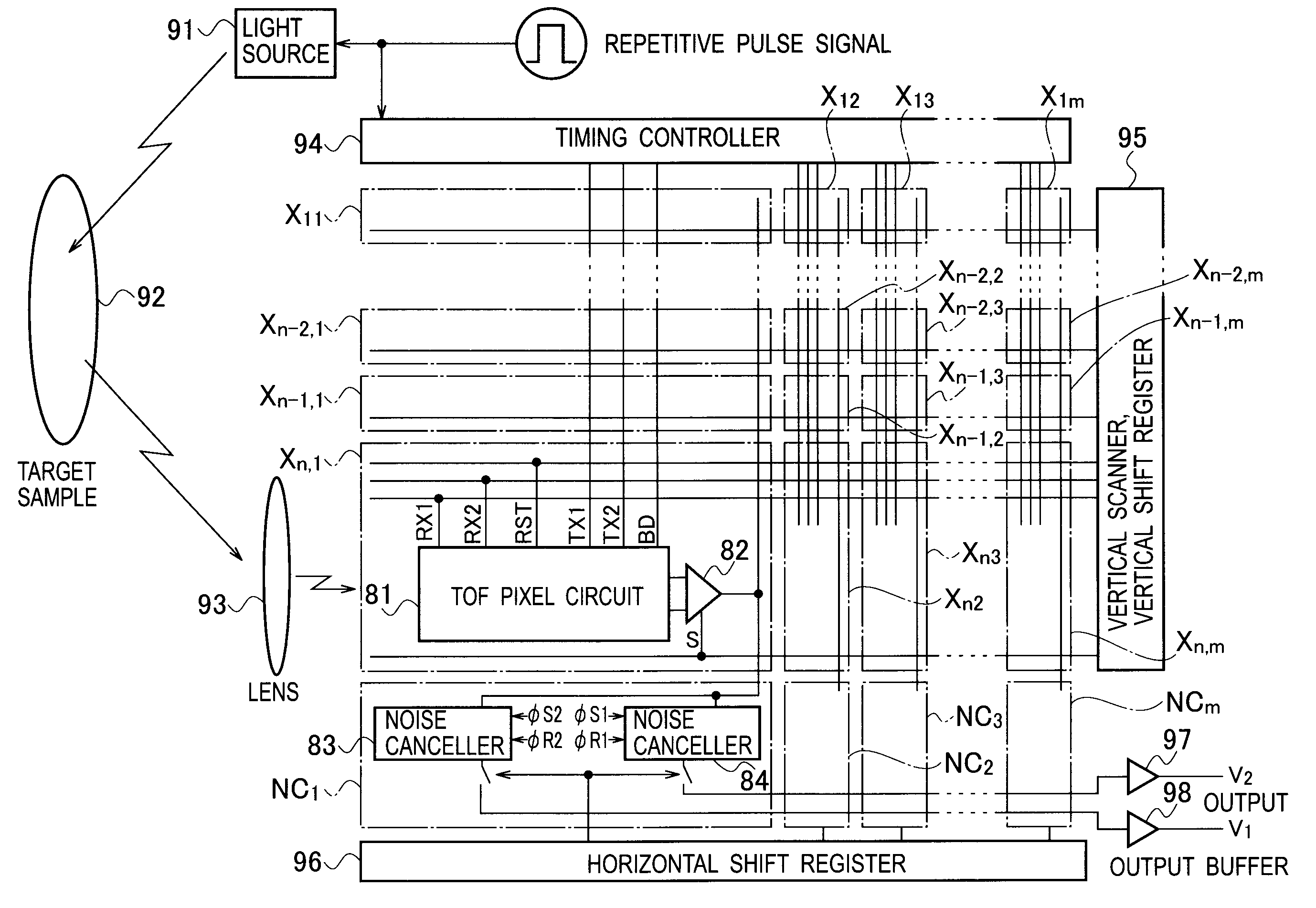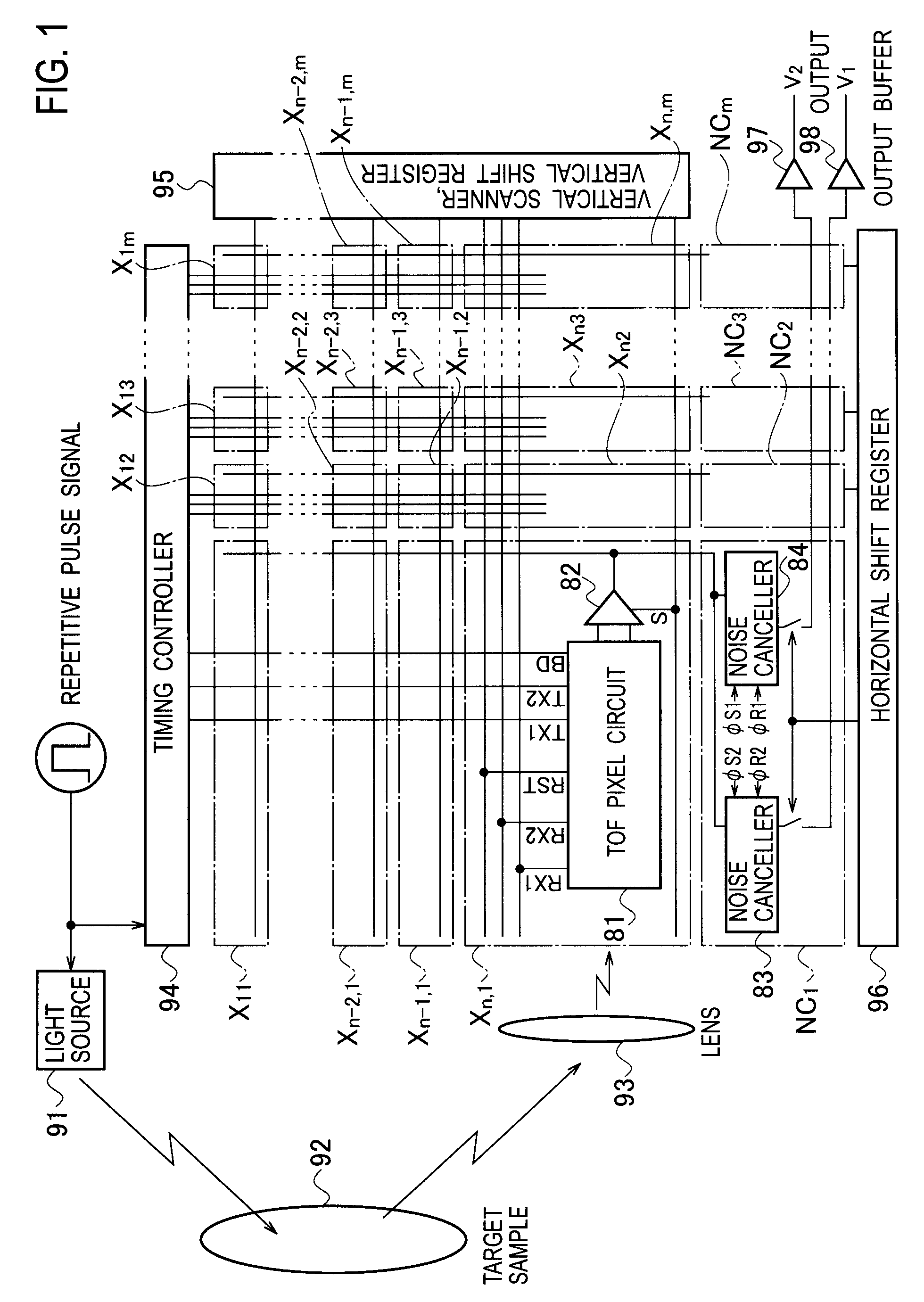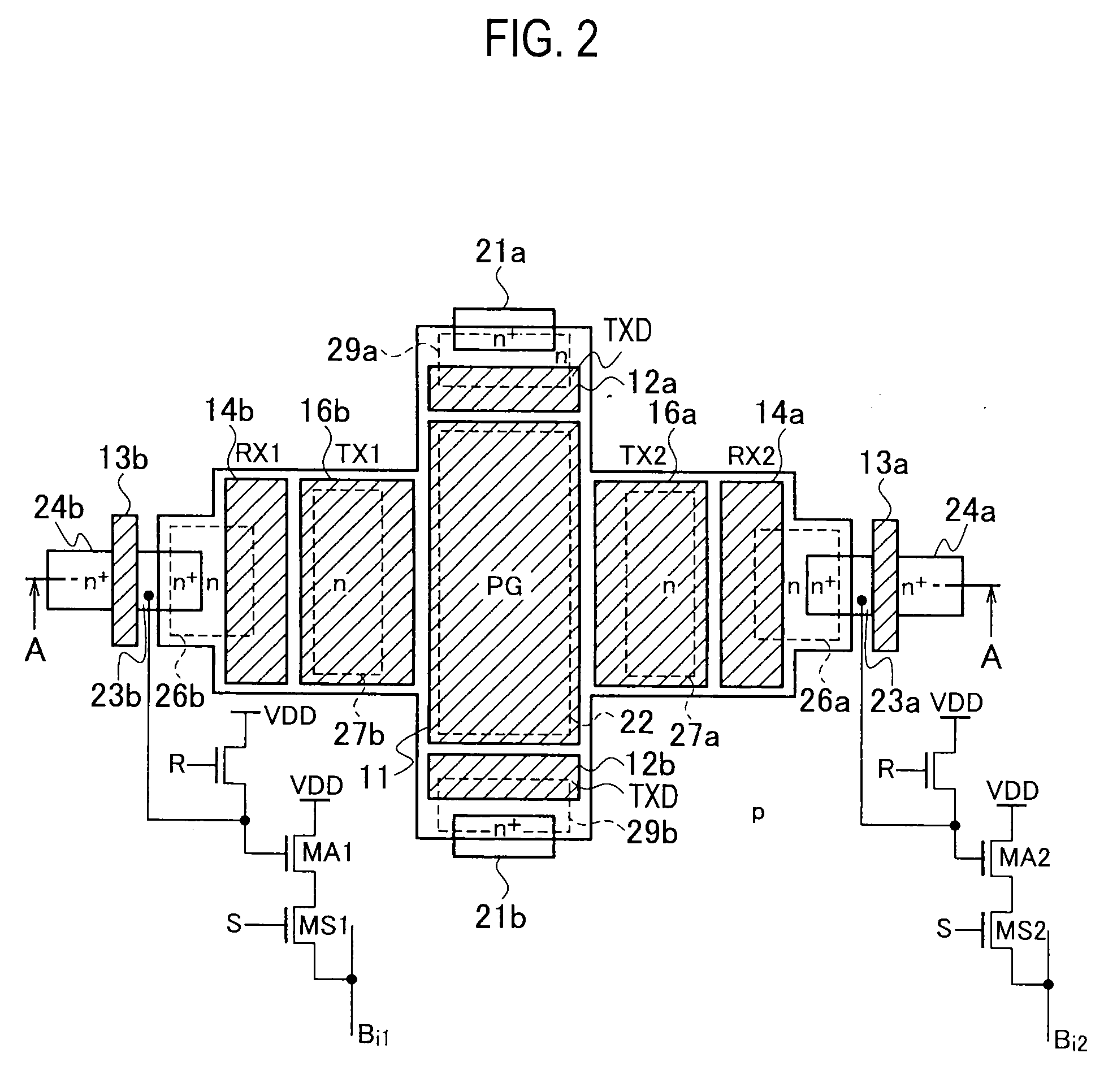Semiconductor range-finding element and solid-state imaging device
a range-finding element and solid-state imaging technology, applied in the direction of radiation controlled devices, distance measurement, instruments, etc., can solve the problems of low random noise level, inability to reset noise, and difficulty in solving the reduction of dark current, so as to improve the low noise performance and reduce the dark current. , the effect of reducing the manufacturing cos
- Summary
- Abstract
- Description
- Claims
- Application Information
AI Technical Summary
Benefits of technology
Problems solved by technology
Method used
Image
Examples
first embodiment
[0038]In a solid-state imaging device (two-dimensional image sensor) according to a first embodiment of the present invention, as shown in FIG. 1, a pixel array area (X1l to X1m, X2l to X2m, - - -Xn1 to Xnm) and peripheral circuit areas (94, 95, 96, and NC1 to NCm) are merged on a same semiconductor chip. A large number of pixels Xij (i=1 to m, j=1 to n, and the m, n are integers, respectively) are two-dimensionally arrayed in the pixel array area, and a rectangular imaging area is established. Then, a timing controller 94 is provided on the upper side of the pixel array area, and a horizontal shift register 96 is provided on the lower side, respectively along pixel rows X11 to X1m, X21 to X2m, - - - , Xn1 to Xnm directions. On the right side of the pixel array area, a vertical shift register and a vertical scanning circuit 95 are provided along pixel columns X11 to Xn1, X12 to Xn2, - - - , X1j to Xnj, - - - X1m to Xnm directions. As an inner structure of the pixel Xnj is representa...
second embodiment
[0082]The entire configuration of the solid-state imaging device (two-dimensional image sensor) according to a second embodiment of the present invention is equal to the block diagram shown in FIG. 1. Thus, the duplex explanations are omitted. Also, the planar configuration of a semiconductor range-finding element serving as a TOF pixel circuit 81 assigned in each of the pixels X11 to X1m, X21 to X2m, - - - , Xn1 to Xnm in the solid-state imaging device pertaining to the second embodiment is basically similar to the planar configuration shown in FIG. 2, which has been shown as one example of the planar configuration of the semiconductor range-finding element pertaining to the first embodiment, with regard to the pattern of the surface wirings delineated on the insulating film 31. Hence, the duplex explanations are omitted.
[0083]FIG. 8 is the sectional structure of the semiconductor range-finding element shown in FIG. 2. Although, the configuration such that the semiconductor range-f...
third embodiment
[0118]The entire structure of the solid-state imaging device (two-dimensional image sensor) pertaining to the third embodiment of the present invention is basically equal to the block diagram shown in FIG. 1. Thus, the duplex explanations are omitted.
[0119]The sectional structure of the semiconductor range-finding element serving as the TOF pixel circuit 81 assigned in each of the pixels X11 to X1m; X21 to X2m; - - - ; Xn1 to Xnm in the solid-state imaging device pertaining to the third embodiment is basically similar to the sectional structure of the semiconductor range-finding element pertaining to the first embodiment. However, the planar layout differs from the planar configuration of the semiconductor range-finding element pertaining to the first embodiment. That is, in the first embodiment, as shown in FIG. 2, the pixel structure is illustrated in which the first transfer gate electrode 16b and the second transfer gate electrode 16a are provided on both of the sides of the lig...
PUM
 Login to View More
Login to View More Abstract
Description
Claims
Application Information
 Login to View More
Login to View More - R&D
- Intellectual Property
- Life Sciences
- Materials
- Tech Scout
- Unparalleled Data Quality
- Higher Quality Content
- 60% Fewer Hallucinations
Browse by: Latest US Patents, China's latest patents, Technical Efficacy Thesaurus, Application Domain, Technology Topic, Popular Technical Reports.
© 2025 PatSnap. All rights reserved.Legal|Privacy policy|Modern Slavery Act Transparency Statement|Sitemap|About US| Contact US: help@patsnap.com



